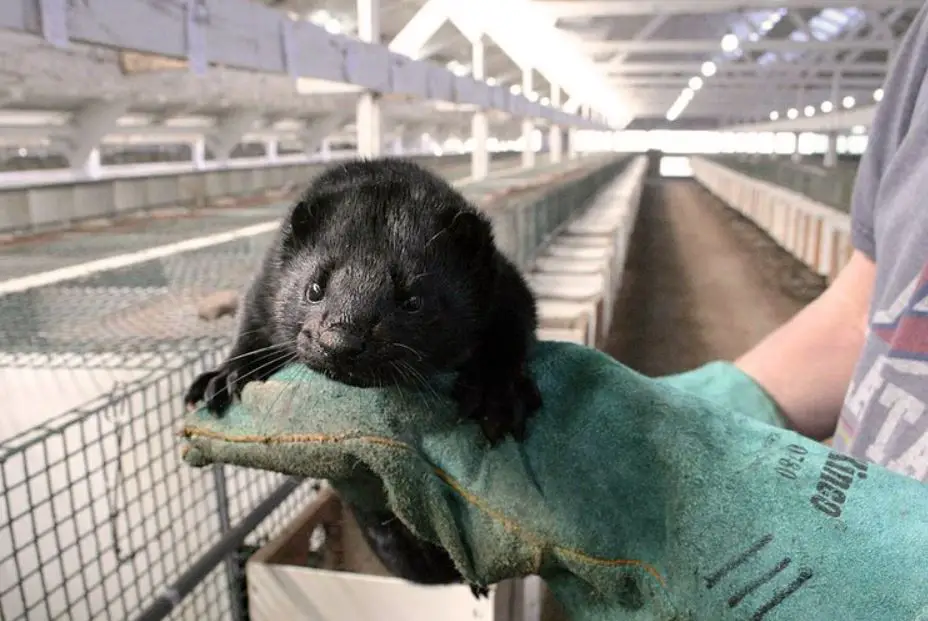Mink farming has been around for decades. It is an intriguing business. But, are you aware of the process and the ethicality of it?
Know all the ins and outs: animal welfare, and environmental consideration. Discover this essential guide and learn all there is to know about it!
Where are Mink Farms Located?
Mink farms are all over the world. They thrive in climates and environments suitable for breeding and fur production. Places like Canada, Denmark, China, the Netherlands, Russia, and the U.S. have established mink farming industries. This is due to natural resources, economics, and demand for mink fur products. Denmark is particularly well-known for its high-quality fur production and many mink farms.
Smaller farms can be found elsewhere, too. They usually specialize in local markets or niche segments of the fur industry. Regulations and guidelines related to mink farming are often in place to ensure ethical practices and animal welfare.
If you’re curious about mink farming, don’t miss out! Explore the industry. Keep up with advancements in breeding techniques, fashion trends involving fur, and consumer preferences. There’s a lot to learn about this agriculture/fashion aspect that influences global trade and industry trends.
How is mink fur processed?
Mink fur processing involves a few steps. Firstly, minks are harvested from farms and their pelts are collected. These pelts are then cleaned to remove any dirt or contaminants. The fur is then separated, and sorted by size, color, and quality.

The fur is then ‘dressed’ with chemicals to make it soft and pliable, and to preserve it. After dressing, it’s stretched and dried to keep its shape. Then, the fur is dyed in various colors, or left natural, depending on demand. It’s also tested for colorfastness, to ensure it doesn’t fade when exposed to water or sunlight. Lastly, the fur is inspected for imperfections before being sold to manufacturers.
Mink farming has been practiced for centuries. One famous mink farmer dedicated his life to perfecting his breeding techniques, which resulted in a record-breakingly expensive silver-blue mink coat at an international auction.
Are minks skinned alive for fur?
Minks aren’t skinned alive for their fur. It’s a widely condemned, inhumane practice. Regulations and guidelines exist to make sure minks are handled humanely during the skinning process.
They are euthanized using gas or electrocution, so they die quickly and without pain. The fur industry is aware of animal welfare and takes action to make sure ethical practices are followed.
Mink farming also involves unique details. Minks are bred and kept in captivity on farms. They have space, water, and a balanced diet. Veterinary care is provided to monitor their health and treat any medical issues.

Mink farming dates back centuries. It started in Europe during the 19th century, when demand for luxurious fur was high. Techniques have evolved over time, leading to more efficient and sustainable methods.
Now, mink farming is an established industry that provides employment and contributes to local economies globally.
The fur industry is addressing animal welfare concerns. Organizations work to ensure transparency, implement stricter regulations, and promote faux fur alternatives. This strikes a balance between fashion trends and ethical duties.
Is Fur Farming Ethical?
The ethics of fur farming has long been debated.
Animals, such as minks, are kept in captivity only for their fur. People who oppose it, say it is cruel and unnecessary. On the other hand, those in favor, claim it benefits the economy.
The living conditions of animals on fur farms is an important factor to consider. Many animal rights activists believe small cages are cruel. Studies show captive minks show abnormal behavior due to their confined environment. Plus, the killing methods have caused worry too.
Fur farms need lots of resources, like water and food. This can lead to deforestation and pollution. Chemicals used to preserve and dye fur, can also contaminate the surroundings.

Ethically, there are strong arguments against it. Wearing fur is not needed in today’s modern society. This causes immense suffering to animals, just for fashion.
It is clear that fur farming has ethical issues. Consumers should know where their products come from, and make wise decisions. Opting for cruelty-free options can reduce demand for fur, and promote ethical practices in the fashion industry.
To solve this issue, we all need to work together. Support brands that prioritize sustainability and animal welfare. By doing so, we can work towards a more ethical future.
How many minks does it take to make a fur coat?
The number of minks to make a fur coat is different, based on various factors. The size of the minks and coat thickness are important. On average, it takes 30-80 minks to make one coat. Here’s the breakdown:
| Design | Nbr of minks |
| Mink Stroller | 30-40 |
| Mink Jacket | 40-50 |
| Mink Coat | 50-80 |
These figures can differ, depending on the design and style. Each mink yields limited usable fur, that’s why lots of minks are needed.
Parts of minks like meat and oil are used in other industries. No part of the animal is wasted, showing how useful mink farming is.
Mink farming has been done for centuries. The 20th century saw a rise in demand, so commercial mink farms opened all over the world. This helped meet the demand for fur coats.
In conclusion, the number of minks needed for a fur coat shows the intricate process and history of mink farming. It’s a reminder of how the industry has advanced over time.


